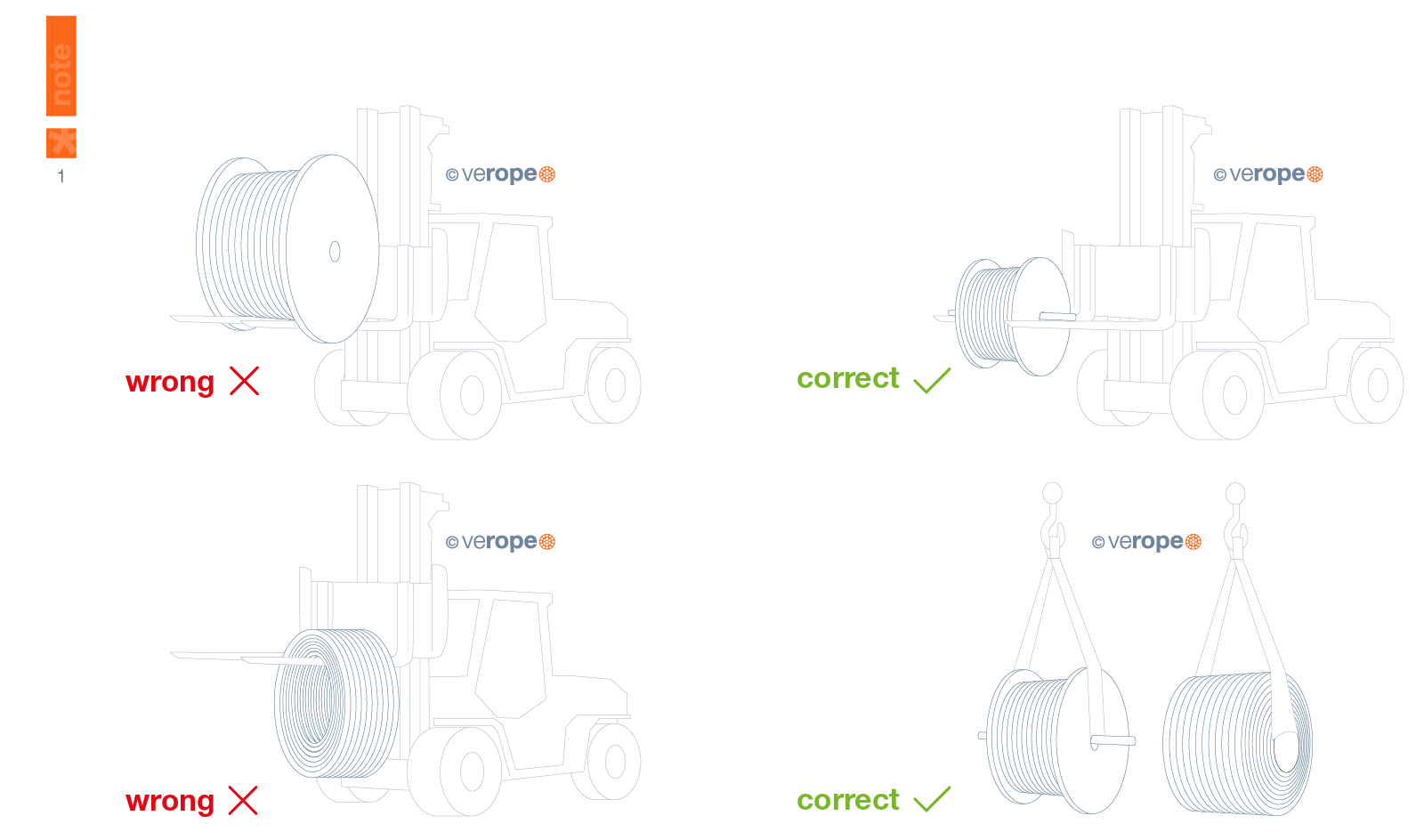Appropriate handling
Handling Notes
Unloading, transporting and storing reels
The handling of wire rope reels requires a certain degree of caution. The reel should therefore be unloaded from the loading area either by means of a fork lift, where the reel is lifted by means of a sufficiently dimensioned shaft as attachment points for the forks, or by means of an overhead crane as described in the picture below.
The wound reel of wire rope should be moved as described before. Reels can easily be knocked over by the forklift which may damage both the reel and wire rope, so it is not advisable to do so.

Correct storage of wire rope reels
After unloading, the reel must be stored in the correct manner. It is important that the reel is always supported with a pallet to protect it from soil moisture. In addition, storage should take place in a covered area where the rope is protected from the weather. In all situations the reel must be protected from direct rain and sunlight. Even if the storage is only short-lived, the measures described above must be applied.

Handling the rope during unwinding and rewinding operations
Suitable devices are required to spool the defined rope length onto a drum or to bring the rope into the reeving system. Thus, turntables or reel stands, as shown in the picture, provide optimal conditions for installing the rope.

For ropes that are wound onto drums, it is also important that the correct winding direction is maintained and that the rope is installed with a pre-tension. If the rope leaves the reel from the top it must also be wound onto the drum from the top. Always reel from top to top or bottom to bottom otherwise the result will be rope damage which can make the rope unusable. The pre-tensioning of the rope to be installed ensures rope safety and a ideal spooling pattern on the drum. This pre-tensioning is obligatory, as the rope can be easily destroyed during the first hoist operation with load if it is spooled loosely onto the drum.

According to the standard, a pretension equivalent to at least 2.5 % to 5 % of the minimum breaking load should be applied. Often these values cannot be achieved with the given devices, therefore the motto is here „the more the better“. The following figure shows the correct winding direction and a winding process in which the reel is braked.

The following picture shows correct and incorrect general rope unwinding methods.


How to cut a steel wire rope
Steel wire ropes consist of many strands closed in a helix and due to this structure ropes must be secured against untwisting. This is usually ensured by welding the ends together or by attaching a suitable end connection.
If the rope is to be shortened from its original length, the rope must be secured on both sides of the desired cutting point. The pictures below show the use of seizing wire, which must be applied in order to secure. The length of the joint is defined as follows:
L = 2 x rope diameter d

Types of rope end connections and rope ends
The connections listed below are commonly used in the rope industry. The selection of the correct end connection depends on the type of rope and application.
